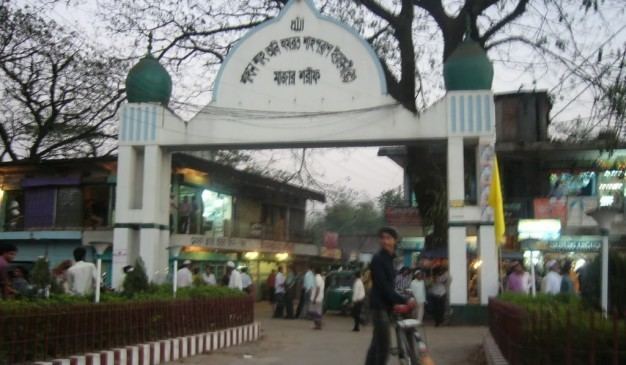Based in Sylhet | Denomination Sufi Title Khalifa | |
 | ||
Period in office Late 13th century to early 14th century | ||
Khanqah of hazrat shah paran
Hazrat Shah Paran (Bengali: শাহপরান, Shah Farhan) was a Sufi saint of the Jalalia section of the Suhrawardiyya order. He was the nephew of Shah Jalal and was born in Hadramaut, Yemen, and accompanied his uncle, Shah Jalal, with whom he arrived in India in 1303 AD. He took part in the expedition of Sylhet which was led by Shah Jalal. After the conquest of Sylhet he established a khanqah at Khadim Nagar in Dakshingarh Pargana, about 7 km away from Sylhet town, where he started Sufi spiritual practices and activities. He played a significant role in propagating Islam and establishing Muslim rule in the Sylhet region. Certain miraculous activities are attributed to Shah Paran:
Contents
One incident will be enough to prove that issue,
Once Shah Jalal's nephew,
Called Shah Paran did a terrible thing,
He ate some pigeons when Shah Jalal was on an outing,
When he came to know of this eventually,
He became rather angry.
The dejected Shah Paran,
Was quite upset then,
He collected the feathers of the pigeons being angry,
Throwing a puff of air, tossed them in the air gently,
By Allah's grace, myriad pigeons were born right there,
Which flew in the sky cutting the air.
History
It is unclear how and when he died, but he is buried near his khanqah. For centuries, large numbers of devotees have visited his tomb, a practice which continues to the present time. On the 4th, 5th and 6th day of Rabi-ul-Awal, the Urs of Hazrat Shah Paran takes place. His grave is located in a high hillock and it is carefully preserved being constructed of brick and surrounded by walls. On the northern side of the grave there is an old tree, the branches and branchlets of which are extended above the entire tomb. The name of the tree is 'Ashagachh' (a tree of hopes); it is claimed that from the leaves of the tree, it appears to be a mixture of the fig, mango and some other tree. People eat the seeds of the figs devotionally in the hope of getting rid of diseases. Mangoes are also eaten with utmost respect as a blessing. Beside the tomb there is an ancient mosque which has been modernised in 1989-91 and can accommodate 1500 worshippers at prayer times.
Adjacent to the main tomb complex of Shah Paran, found in the East of Sylhet, is another tomb visited by worshipers, that of Konya Shah. Legend has it that this follower of the great saints was neither man nor woman. There is a permanent exhibition of the life and times of this saint. Contemporary paintings and pictures featured at the tomb/exhibition depict a person most likely to be a eunuch.
A road bridge over the Surma River, a passenger ferry and a residence hall at Shahjalal University of Science and Technology have all been named after Shah Paran.
About Spiritual Teacher
There are given below Hazarat Shah Poran(R)'s most higher teachers by followed:
